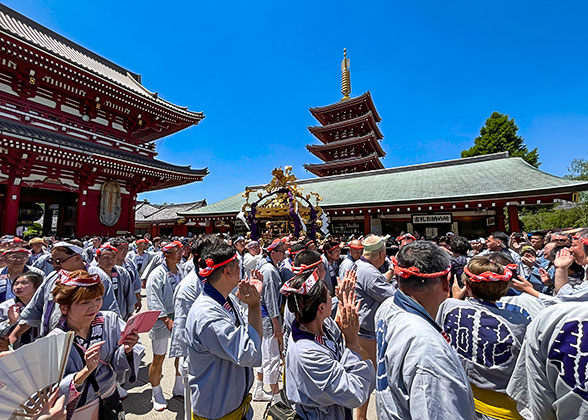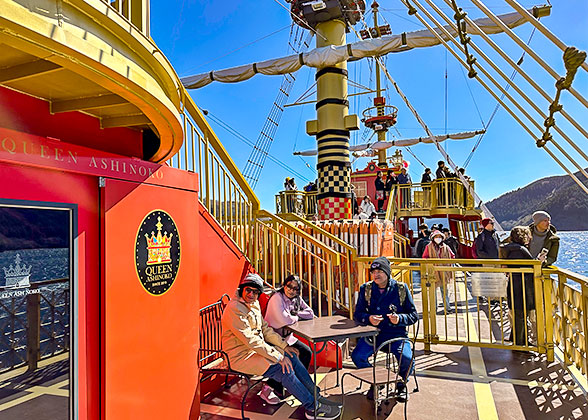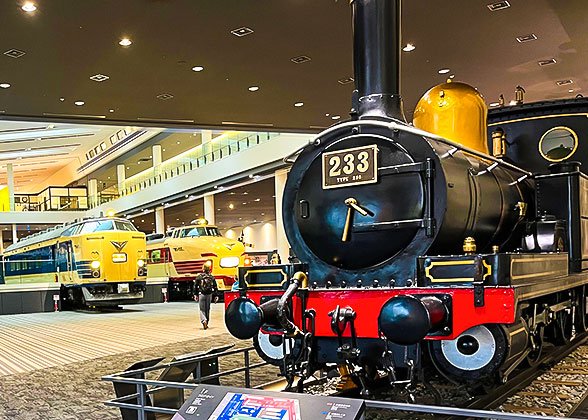Mount Fuji Weather in November
1. At the surrounding foothill of Mount Fuji, the weather in November is generally very cool during the day, but a bit cold at night. It’s very cold up on the mountain.
2. Precipitation is not frequent and mainly in form of fine rain. Snowfall may occur on the top of the mountain for several times, forming snowcap on the summit sometimes.
3. November is a good month to admire autumn leaves around the foothills.

Nice Weather around Mt. Fuji
|
Temperature
Average high temperature of the foothills: 14 degrees Celsius (57.2 degrees Fahrenheit)Average low temperature of the foothills: 2℃ (35.6℉)
Generally speaking, the weather around the foothills of Mount Fuji in November is cool mostly during the day, and cold in early mornings and evenings. In the early month, the maximum temperatures hover around comfortably cool 15-20℃ (59-68℉), occasionally reaching 25℃ (77℉) at sunny noon; however, at night, temperatures drop to chilly 3-8℃ (37.4-46.4℉). In mid-to-late November, daytime temperatures are generally very cool, fluctuating between 10-15℃ (50-59℉) most of the time; at night, temperatures typically drop below cold 5℃ (41℉), with some nights even dropping below 0℃ (32℉).
The climate of the Mount Fuji 5th Station, the highest elevation open to public in November, is quite cold, averaging -8 - 5 ℃ (17.6 - 41℉).
Precipitation & Humidity
Precipitation in this month is moderately low, with an average total of 136 mm; the frequency is not very high, about 12 wet days, with most time being fine rain. In some years the number of days with precipitation was even less than 10.The average humidity at the foot is 74%.
There is almost no snow at the foot of the mountain this month. As for the top of Mount Fuji, heavy snowfall may occur for several times; however, the snow cover is not too thick and may not stay for too long. If it rains on the top of the mountain, the snow cap can be washed away. The snow cap usually doesn’t remain persistently until December.

Mt. Fuji Snow Cap in November
|
Daylight Hours & Sunshine Hours
Sunrise time (1st-30th): 06: 07 - 06: 35Sunset time (1st-30th): 16: 52 - 16: 33
With an average of only 10.4 hours of daylength, you should plan a tight schedule for day trips. Considering the sun sets very early, you might need to start your itinerary as early as possible to make the most of your daylight hours. Fortunately, November boasts an average of 13 sunny days, when are more recommended for Mount Fuji trips by virtue of the higher visibility.
The average UV index is 2, so sunscreen is not essential.

Mount Fuji & Autumn Leaves
|
Is November a Good Time to Visit Mount Fuji?
It depends.If you are visiting Mount Fuji for its snow cap, you might be disappointed since it has not formed in a persistent way. If you want to see the snow-capped peak of Mount Fuji, it is recommended to check the weather forecast before going, to see if there is snow on the top of the mountain.
Nevertheless, November’s temperatures are comfortably cool and the visibility improves significantly, providing higher chances for you to see full view of Mount Fuji. Above all, November is a great time to enjoy the autumn foliage. Areas around the mountain foot like the Lake Kawaguchi, Lake Yamanaka, Arakurayama Sengen Park, and Oshino Hakkai are already bathed in vibrant red, orange and yellow colors.

Autumn Foliage near Laka Kawaguchi
|
Pack Guide for Mount Fuji Trip in November

|
During most of the day in early November, you can wear a long-sleeved shirt inside and a wool sweater or a fleece-lined hoodie outside, which is warm enough. Still, you need to bring an outwear like a jacket or a long coat so as to cope with the windy moments and chilly temperatures in the early morning and after sunset. In mid to late November, you are recommended to always keep the outwear on since the air during the day is colder than before. As for the pants, you’d better prepare both thin ones like jeans and trousers for the early days and thick ones like sweatpants for the middle and late periods.
Tourists who would like to visit the 5th Station are recommended to bring extra warmer clothes like the 3-in-1 jacket, long johns, and fleece-lined pants.
Sneakers and hiking boots are optimal options. Just remember that no matter what kind of shoes you wear, comfort is the priority.
The rain gear is one of the essentials during your trip. In late fall, when temperatures drop rapidly, it’s always a good idea to pack cold medicine to prevent or alleviate any runny nose or sore throat symptoms. Also, if you have extra space in your suitcase, bring a scarf or shawl to keep warm when you feel cold.
Seasonal Recommendations for Mount Fuji Trip in November
![]() After day activities, you are highly recommended to take a hot spring bath to dispel your fatigue. Many scenic hotels at the foot of Mount Fuji are equipped with open-air hot spring baths that cater to the needs of different guests.
After day activities, you are highly recommended to take a hot spring bath to dispel your fatigue. Many scenic hotels at the foot of Mount Fuji are equipped with open-air hot spring baths that cater to the needs of different guests.
|
|
|




